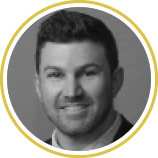Becoming Established in the United Kingdom
Andrew M.J. Turnbull, BM, PGCertMedEd, PGDipCRS (Dist), CertLRS, FRCOphth
United Kingdom

Becoming established as a refractive surgeon in the United Kingdom has often required a do-it-yourself approach with an unstructured program of learning involving self-directed reading, wet labs at conferences, and tutelage from companies on how to use their devices. Because the refractive surgery market is competitive, support has not always been forthcoming from colleagues, and individual surgeons have been left isolated and struggling for survival in a dog-eat-dog world. This situation, thankfully, is changing.
Refractive surgery has become a mainstream specialty of ophthalmology, and the need for formal training, supervision, and qualifications is now recognized. A collegial approach is becoming more prevalent in which refractive surgeons share and discuss cases and the merits of different refractive solutions. This exchange benefits not only surgeons but also, and more importantly, patients seeking vision correction.
TRAINING
The Postgraduate Diploma in Cataract Refractive Surgery (PGDipCRS), hosted by Ulster University and accredited by the Royal College of Ophthalmologists (RCOphth), is one of the first courses required to achieve a recognized qualification in refractive surgery in the United Kingdom. Having received my PGDipCRS in 2019 and now teaching part of the course alongside Dan Z. Reinstein, MD, MA(Cantab), FRCSC, DABC, of the London Vision Clinic, I find it difficult to imagine how anyone could safely start a refractive surgery practice without similar education. The surgical techniques involve relatively short learning curves for experienced cornea and cataract surgeons. The theory underpinning refractive surgery and appropriate patient selection, however, is vast and complex. Both a thorough theoretical understanding and surgical excellence are essential to delivering good outcomes.
Another welcome advance toward formal accreditation is the RCOphth Certificate in Laser Refractive Surgery. This two-part examination includes a written paper with multiple choice questions and a structured viva; candidates who hold a PGDipCRS are exempt from the former. Since 2018, all refractive surgeons entering independent practice in the United Kingdom have been required to hold or be working toward the Certificate in Laser Refractive Surgery.
Once armed with the aforementioned qualifications, how does one get started as a refractive surgeon, given that most ophthalmic surgical training programs offer minimal exposure to this specialty? The widely recommended first step is to undertake a cornea and/or refractive surgery fellowship. This is not mandatory, but it is considered an essential prerequisite by many.
ESTABLISHING A PRACTICE
The next step is to decide how to get established in private practice. In the United Kingdom, this could be in addition to employment as a hospital consultant in the public sector (I am also a National Health Service consultant in cataract and anterior segment surgery) or one’s primary form of employment. One option is to go solo, but this requires significant capital outlay to cover the costs of the premises, equipment, marketing, and other key components of a successful refractive practice. Most surgeons instead choose to join an established practice where the infrastructure is already in place. This situation reduces the financial risk and, more important, offers benefits in terms of training, support, and equipment to deliver excellent outcomes to patients from day 1.
At the culmination of my UK training, I completed a cornea fellowship in Southampton, during which I also undertook a month-long observership with Iqbal Ike K. Ahmed, MD, FRCSC, in Toronto and Michael E. Snyder, MD, at the Cincinnati Eye Institute. I then completed a second cornea fellowship with Graham D. Barrett, MB BCh SAf, FRACO, FRACS, in Perth, Australia. With this fellowship, I gained expertise in advanced IOL power calculations, astigmatism correction, and monovision.
Afterward, I was recruited by Optegra Eye Hospitals, the United Kingdom’s largest group of dedicated private eye hospitals. To maintain its high standards and reputation for excellence, Optegra maintains a commitment to rigorously training its refractive surgeons. For example, I completed an intensive 1-month onboarding program that included time at the London Vision Clinic and hands-on training in Bengaluru, India, with Sri Ganesh, MBBS, MS, DNB, FRCS, and Sheetal Brar, MS. During this period, I also received focused instruction on how to use the VisuMax and MEL 90 laser platforms (both from Carl Zeiss Meditec). Additionally, I honed my ability to perform SMILE, LASIK, and PRK; implant the Evo Visian ICL (STAAR Surgical); and select candidates for presbyopia correction with Presbyond LASIK and multifocal IOLs. This training was followed by a year of supervised practice under the guidance of Robert J. Morris, BSc(Hons), FRCOphth, FRCS, MRCP, and Amir Hamid, BMBS, BMedSci, CertLRS, FRCOphth, MRCOphth—two of this country’s most experienced refractive surgeons.
CONCLUSION
I would recommend an approach similar to my own to any aspiring refractive surgeon. The combination of rigorous theoretical education, targeted and structured on-the-job training, and independent practice with expert support has promoted successful results for my patients, and it has been a highly rewarding experience for me. I have loved my journey in refractive surgery so far and look forward to an exciting future of collaboration, evolving technology, and ever-improving outcomes.
Building a Thriving Refractive Surgery Practice
Joshua Duncan, DO
Arizona, United States

I decided to pursue a career as a refractive surgeon because I was drawn to the precision and customizability of the procedures and the diversity of treatment options. Getting established and building a thriving refractive surgery practice, however, can be challenging.
TRAINING
Having the opportunity to learn from highly experienced refractive surgeons can be extremely beneficial. As with many aspects of medicine, access to great mentors is essential. Additional fellowship training is not mandatory. I, however, gained a lot from my cornea, refractive, and anterior segment fellowship at Baylor College of Medicine in Houston. I learned how to think about each patient differently from a refractive standpoint. I embraced the challenge of meeting patients for the first time; learning about their lifestyles, hobbies, professions, and visual needs; and deciding which refractive modality could deliver the best results to them.
ESTABLISHING A PRACTICE
Practice type and vision. After completing my fellowship training, I wanted to hit the ground running as a refractive surgeon and grow my practice quickly. I felt the best way to accomplish this was to join a well-established refractive group.
Starting a refractive surgery practice can be expensive. Sharing the cost with partners can mitigate some of the financial risk. It was important to me to join a group that had a long track record of being on the technological cutting edge, delivering excellent refractive outcomes to patients, and fostering the growth and development of young surgeons.
A successful refractive practice requires teamwork and a shared vision. Today’s patients seek not just excellent outcomes but also an excellent experience. I work closely with our administrative leaders, surgeons, refractive coordinators, marketing team, and comanaging optometrists to achieve these goals.
Attitude and approach. I believe that several things can help make a refractive surgeon successful. First are excellent skills and surgical technique; referring providers must trust that their patients are receiving the best care possible. Second is a willingness to embrace modern technology and adapt to its nuances. After a product enters the market, there is a period of fine-tuning when surgeons develop a feel for the product’s intricacies. Guidance from mentors and colleagues can be tremendously helpful during this process. Third is an ability to quickly build rapport with patients while setting realistic expectations. A challenge for any new refractive surgeon is finding the balance between the promise and the delivery.
COVID-19. In my market, the pandemic has had an interesting impact on refractive surgery. Case volume dropped significantly at the height of the pandemic, but thereafter volumes have exceeded pre-COVID levels. I suspect that experiencing the inconveniences related to mask wear and having more free time are factors that have increased patients’ motivation to get rid of their glasses and contact lenses.
Swimming Against the Current
Ben LaHood, MD, MBChB(Dist), PGDipOphth(Dist), FRANZCO
Australia and New Zealand

I am genuinely surprised at how few ophthalmology trainees pursue a career in refractive surgery. Maybe they view it as an unnecessary cosmetic field, unlike specialties such as ocular oncology that involve the treatment of sight-threatening conditions. I certainly was not exposed to any form of refractive surgery during my training in New Zealand, and people simply don’t miss what they don’t know about. Attending refractive surgery clinics has only recently become a part of the required syllabus for Royal Australia and New Zealand College of Ophthalmology trainees.
I became aware of the exciting world of refractive surgery during my training as I learned what my cornea specialist consultants were doing in their private clinics. The life-changing effects of cataract surgery appealed to me. Laser vision correction appeared to provide this same incredible change but faster, with greater precision, and often for a more enthusiastic group of patients. Refractive surgery also seemed to be associated with fewer emergencies. Most of my supervising consultants, however, spoke only of the downsides of refractive surgery, such as demanding patients, horrific complications, and medicolegal nightmares. I felt like pursuing a career in refractive surgery was swimming against the current.
TRAINING
I investigated various fellowships around the world that offered any kind of refractive surgery experience. They were few and far between. I traveled to Toronto to see what an anterior segment fellowship there offered; although it looked fantastic for a cornea specialist, I wanted more of a refractive surgery focus. At this stage, I had not observed a single laser vision correction case.
I attended the ESCRS annual meeting in Barcelona in 2015. I did not know anyone there but found something exciting in every single session. While in Toronto, I had interviewed for a fellowship in cataract and refractive surgery with Michael Goggin, MB BCh, BAO, DO, MS, FRCSI(Ophth), FRCOphth, FRANZCO, from Adelaide, Australia, and I was accepted. When I began the fellowship, I went from never having implanted a premium IOL to never having an operating list with anything other than toric and multifocal IOLs. I was involved in laser refractive surgery on a weekly basis and loved it. In this extremely positive and supportive environment, I was able to think freely, produce interesting research, and become involved in other opportunities.
I wanted to gain further experience and see other laser techniques, so I traveled to the United States to observe Douglas D. Koch, MD, in Houston and Vance Thompson, MD, FACS, in Sioux Falls, South Dakota. Both of these ophthalmologists are leaders in their fields and have access to the latest devices. The greatest aspect of these visits for me, however, was meeting like-minded, supportive, enthusiastic people who understand just how rewarding refractive surgery can be when it is executed well.
Since completing my fellowship, I keep up to date with the latest developments in refractive surgery by attending and contributing to meetings of the ESCRS, ASCRS, and Australasian Society of Cataract and Refractive Surgeons. Working with industry has also been an incredibly rewarding means of disseminating my research, gaining access to new products, and learning new techniques. I feel that I have found my niche in refractive surgery.
ESTABLISHING A PRACTICE
Decision-making. One of the most daunting things about becoming established as a refractive surgeon is decision-making around cases. This requires addressing unusual questions such as whether proceeding with LASIK or SMILE appears to be safe based on various factors, how to deal with ectasia, and whether someone is a suitable candidate for a trifocal IOL. At the outset, decision-making can feel like a tug-of-war between the urge to try something that could help the patient and the urge to act conservatively and say no when a treatment may not be the right fit. When starting out in private practice, it can feel as though referring optometrists (quite rightly) are sending a patient as a test and waiting to see the results before making another referral. An early conservative approach can be a wise strategy to avoid unnecessary stress.
As I established my practice, I received the most reassurance by surrounding myself with people whom I could ask for advice without fear of being embarrassed and who would respond to my queries relatively quickly. My fellowship supervisor, Associate Professor Goggin, was and continues to be my definition of a mentor. Together, we formed a group of like-minded surgeons across Australia who get together via Zoom and present our most complex cases. The content of these meetings does not leave the group, and participants share their advice and sometimes a vote. These meetings have become less frequent, but I have found regular discussion with friendly refractive colleagues to be invaluable.
Building a practice. In terms of establishing a refractive practice and attracting patients and referrals, my advice is to be patient. Word of mouth is a refractive surgeon’s best advertising. I have had patients who will tell anyone who will listen about the wonders of laser vision correction.
In the early stages of establishing a practice, I had more time on my hands, and I made the most of that. I met with referral sources, I gave my patients more time, and I was quick in replying to queries. All of those things helped to drive word-of-mouth referrals.
I am a strong believer that, even in a crowded market, the cream rises to the top. If a new refractive surgeon provides an excellent patient experience and excellent refractive outcomes, I think the rest will come.
Access. One of the main difficulties encountered early in a refractive surgeon’s career is gaining access to a laser. I presume that this obstacle occurs because a practice’s established surgeons think that allowing a new colleague to use a laser system will dilute their share of the market. In my experience, increasing public awareness of refractive surgery tends to grow the market for everyone. My advice to new surgeons is to be aware of this potential difficulty when making a commitment to a practice and to beware of agreements in which there is nothing in writing about access to vital equipment.
Another potential difficulty relates to the division of referrals at a practice with more than one refractive surgeon. When one joins a practice, it is easy to concentrate on big decisions such as buying shares or access to ORs. It is important to remember that patients often refer themselves for refractive surgery or are referred to the practice rather than to an individual surgeon. It is therefore important to discuss the distribution of uncommitted referrals openly and to create a transparent system with staff and colleagues that can prevent future problems. My advice to early-career refractive surgeons is to raise this issue with senior colleagues, reach an agreement and include it in the contract, and review the numbers at regular intervals.
INFLUENCE OF COVID-19
When the COVID-19 lockdowns began in Australia, I was considering opening my own practice, laser suite, and OR. Uncertainty related to the pandemic prompted me instead to join an established refractive practice in Adelaide, Australia. This has worked well for me, and my practice has grown rapidly.
Today, I might make a different decision because interest rates are low, the ophthalmic industry is keen to make deals, and COVID-19 vaccines and commercial real estate are available. It is difficult to predict how people will spend their money once they are free to travel regularly again, but I sense a shift toward increased spending on health that bodes well for the future of refractive surgery.


